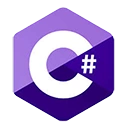Introduction
The .NET Framework is a software development platform developed by Microsoft. It provides a comprehensive and consistent programming model for building applications. This guide offers an in-depth understanding of the .NET Framework, its components, and how to work with it, along with sample code to illustrate key concepts.
Key Components of the .NET Framework
The .NET Framework consists of several key components, including:
- Common Language Runtime (CLR): The CLR is the runtime environment for .NET applications. It manages memory, provides security, and executes code written in different .NET languages.
- Base Class Library (BCL): The BCL is a collection of reusable classes, types, and methods that are available to all .NET applications. It provides essential functionality for tasks such as file I/O, data access, and more.
- Class Libraries: .NET includes a wide range of class libraries and APIs for specific purposes, including ASP.NET for web development, Windows Forms for desktop applications, and ADO.NET for database access.
- Languages: .NET supports multiple programming languages, including C#, Visual Basic, F#, and more. Developers can choose the language that best suits their needs and expertise.
Sample .NET Framework Code
Below is an example of a simple "Hello World" program written in C#, demonstrating the basics of using the .NET Framework.
C# Code (Hello World):
using System;
class Program
{
static void Main()
{
Console.WriteLine("Hello, .NET Framework!");
}
}
Conclusion
The .NET Framework is a powerful platform for building a wide range of applications, from web and desktop to mobile and cloud-based solutions. This guide provided an overview of the .NET Framework, its key components, and included sample code for a simple C# program. As you delve deeper into .NET development, you'll unlock the full potential of this versatile platform for your software projects.

